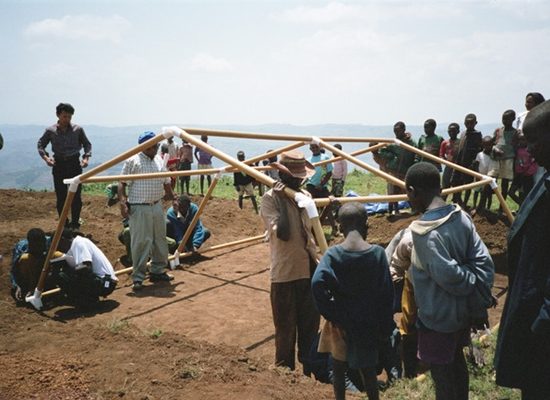Shigeru Ban, an architect famous for an innovative use of recycled materials in his disaster relief shelters (see Shigeru Ban Wins Pritzker Prize for Architecture), has announced that he will deploy emergency shelters for victims of the recent earthquake in Nepal.
In its first phase, Ban’s relief organization, Voluntary Architects’ Network (VAN), will be circulating donated tents and plastic sheets (as dividers) to set up on-site for temporary shelter and medical stations.
Afterwards, as things in the country begin to stabilize, VAN says it will partner with local schools and architects to construct alternative houses and community centers, with permanent structures to come. However, the exact number of donated houses and their construction timing has yet to be announced.
This isn’t the first time Ban has flexed his altruistic muscle, according to Hyperallergic. The Japanese starchitect built his first disaster shelter in 1994 in Rwanda, and he also designed housing for disaster victims in India, Sri Lanka, China, Italy, New Zealand, and in Japan, where he placed over 1,800 temporary homes in Onagawa after the 2011 earthquake and tsunami.
VAN is not the only organization that has rushed to Nepal’s aid in its time of crisis. The Red Cross and Doctors Without Borders are also working hard to provide housing for local residents in need.
Shigeru Ban. Paper Partition System 4 / Otsuchi High School, Iwate Prefecture, Japan (April 20th, 2011). Photo: VAN.
